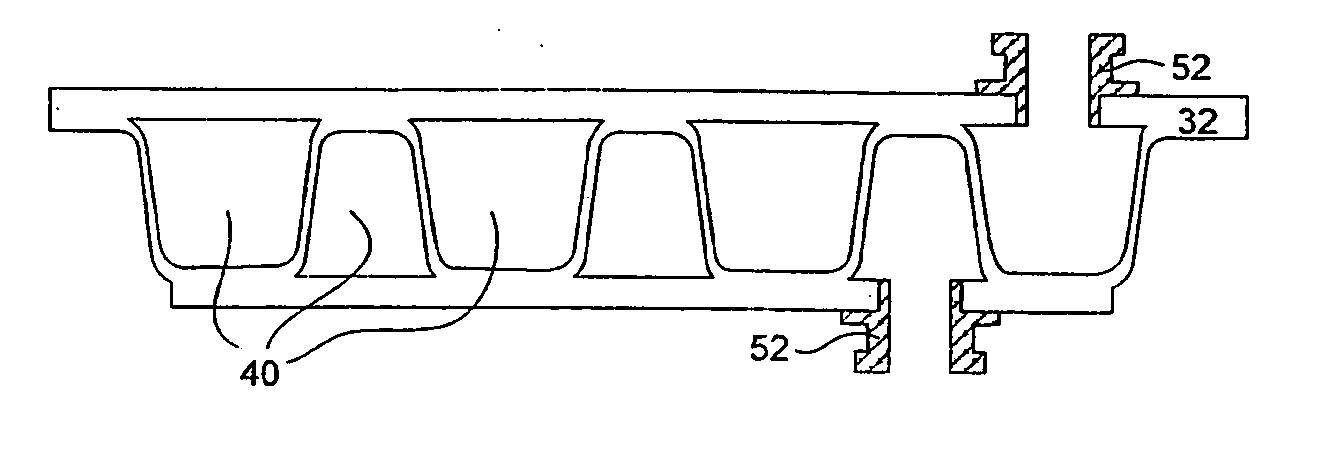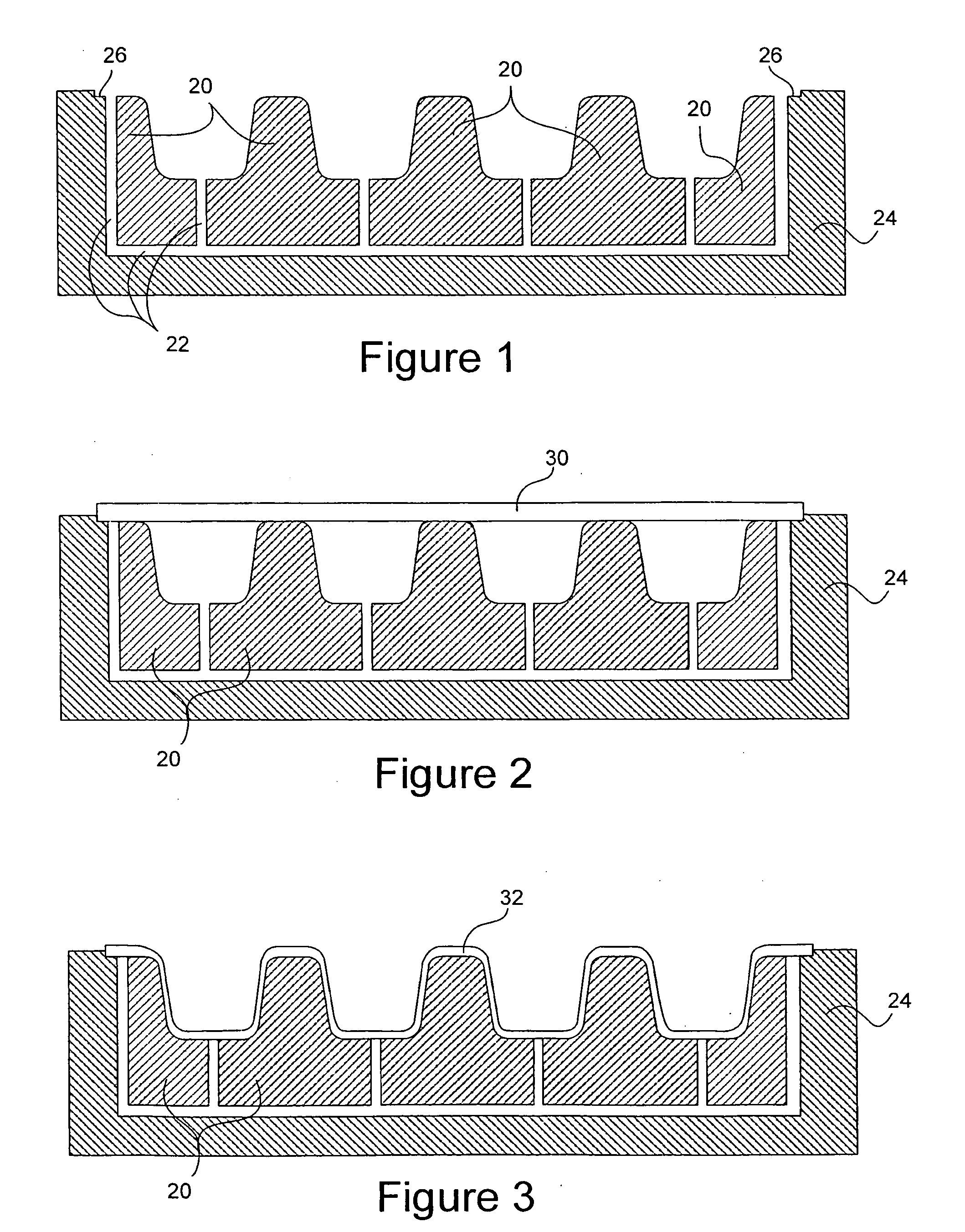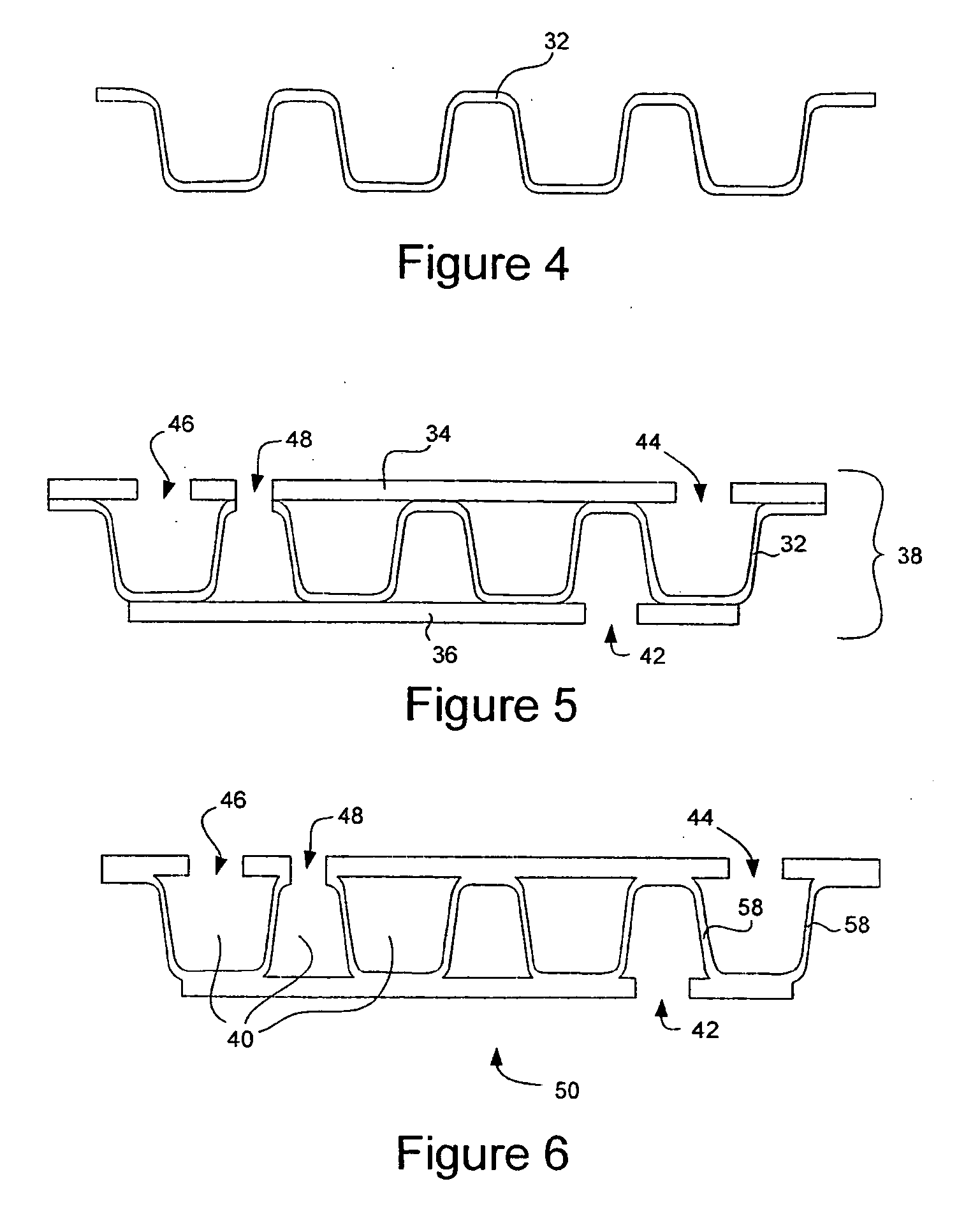High thermal efficiency glass microfluidic channels and method for forming the same
a microfluidic channel and high thermal efficiency technology, applied in the field of microfluidic devices, can solve the problems of relatively poor heat conductivity of glass and glass-ceramics, and achieve the effects of reliable and efficient production of such devices and channels, good surface characteristics, and good strength
- Summary
- Abstract
- Description
- Claims
- Application Information
AI Technical Summary
Benefits of technology
Problems solved by technology
Method used
Image
Examples
Embodiment Construction
[0027] The present invention provides a device having microfluidic channels formed of thin glass, glass-ceramic or ceramic sheet material possessing good surface characteristics and good strength, and provides a process for reliably and efficiently producing such devices and channels. The method of the present invention employs forming by means of differential gas pressure to achieve the desired thin-walled, high-surface quality microchannels of glass, glass-ceramic, or ceramic. The resulting thin-walled microchannels allow efficient heat exchange while offering superior chemical durability and heat resistance. The inventive forming process provides a simplified and reliable manufacturing process while providing a resulting device that maximizes thermal exchange.
[0028] According to the present invention, micro channels are created by a process that includes closing a three dimensional glass, glass ceramic or ceramic shape, and not solely by stacking micro-structured plates. An exem...
PUM
| Property | Measurement | Unit |
|---|---|---|
| Thickness | aaaaa | aaaaa |
| Thickness | aaaaa | aaaaa |
| Thickness | aaaaa | aaaaa |
Abstract
Description
Claims
Application Information
 Login to View More
Login to View More - R&D
- Intellectual Property
- Life Sciences
- Materials
- Tech Scout
- Unparalleled Data Quality
- Higher Quality Content
- 60% Fewer Hallucinations
Browse by: Latest US Patents, China's latest patents, Technical Efficacy Thesaurus, Application Domain, Technology Topic, Popular Technical Reports.
© 2025 PatSnap. All rights reserved.Legal|Privacy policy|Modern Slavery Act Transparency Statement|Sitemap|About US| Contact US: help@patsnap.com



